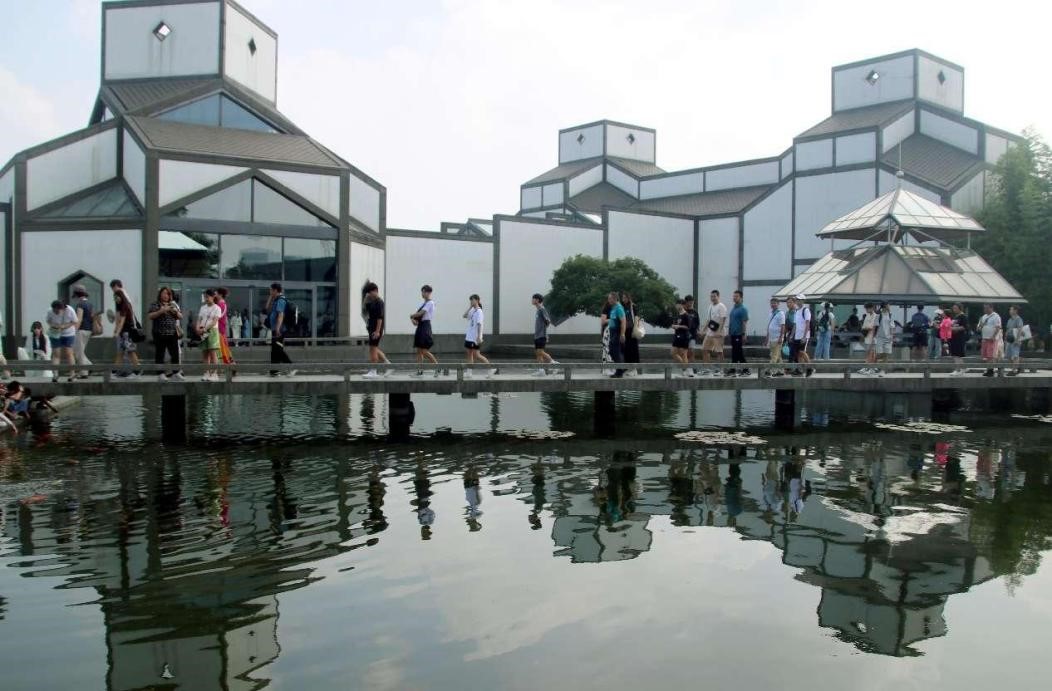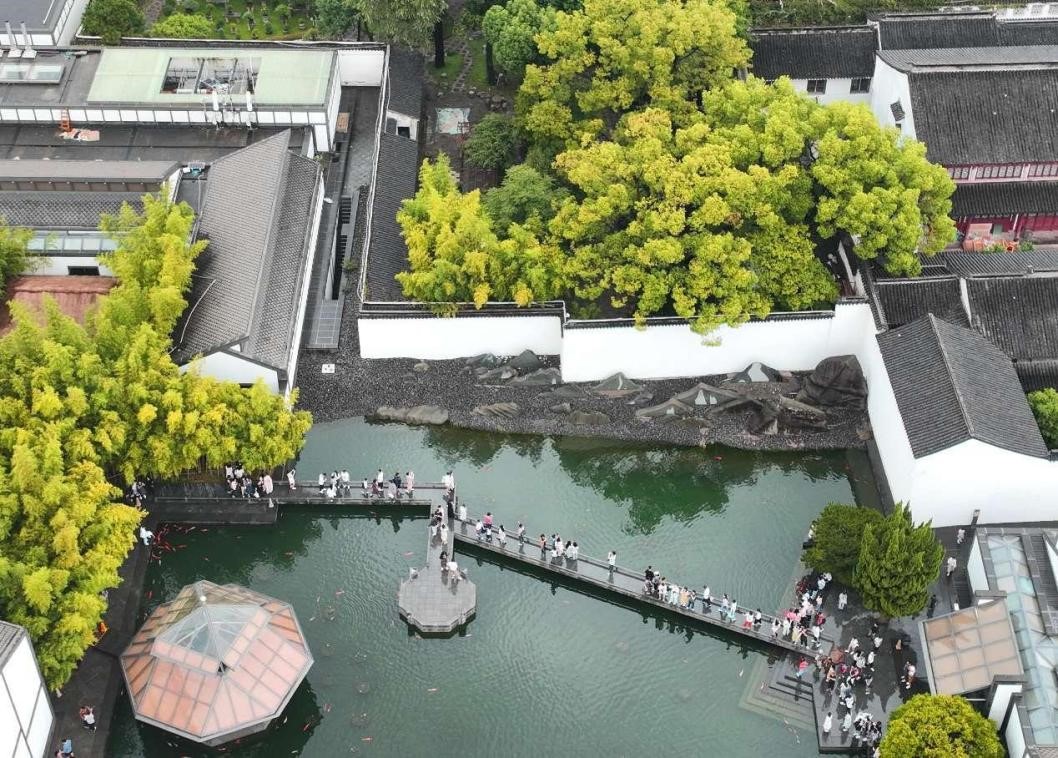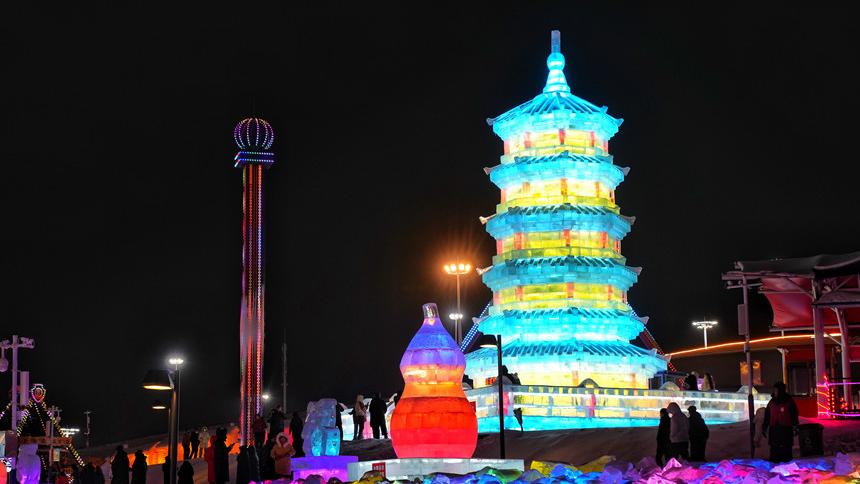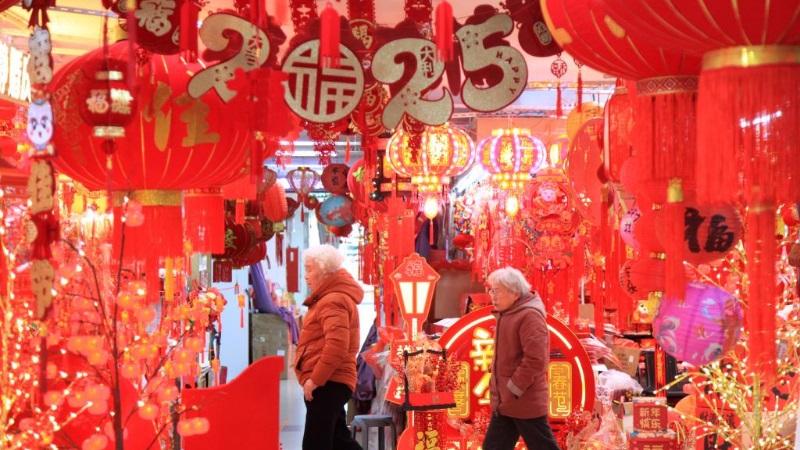Low-carbon transition story of Suzhou Museum
Suzhou Museum, which sits on Dongbei Street, Suzhou, east China's Jiangsu province, is always seeing a constant stream of visitors.
The museum covers a construction area of 19,000 square meters and houses over 25,000 pieces and sets of cultural relics. It receives more than 2.5 million visits on average each year. The museum was designed by renowned architect Ieoh Ming Pei and has maintained high popularity since it was opened in 2006.
However, to the surprise of many, this structure surrounded by lush bamboos and lucid waters was once challenged by high energy consumption, high operational cost and high carbon emissions.

Tourists visit Suzhou Museum in Suzhou, east China's Jiangsu province. (People's Daily Online/Wang Jiankang)
Director of Suzhou Museum, Xie Xiaoting, told People's Daily that the museum has to be kept at a constant temperature and humidity level year-round with exceptionally high air quality, in order to maintain a comfortable environment for the numerous visitors it receives every day and ensure optimal conditions for the preservation of cultural relics. This, however, consumes a significant amount of energy.
To address this challenge, Suzhou Museum decided to build itself into a carbon-neutral facility in 2021.
Promoting low-carbon operations starts with accurately measuring energy consumption of the museum. Therefore, the museum invited a team led by Professor Wei Qingpeng from Tsinghua University's Building Energy Conservation Research Center to conduct a comprehensive "diagnosis" of the facility.
"It was an incredibly challenging task," Wei recalled. The museum's equipment cannot be shut down, as that could jeopardize the cultural relics. Consequently, much of the work had to be carried out during brief, carefully timed intervals.
Additionally, many of the museum's systems and pipelines were concealed within narrow spaces between floors, requiring staff to crawl into tight areas with instruments to collect data.
After more than two years of effort, the team completed an extensive analysis of the museum's structures, materials, and equipment. They presented a "diagnostic" report along with a tailored implementation plan to achieve carbon-neutral operations.
Maintaining a constant temperature of around 21 degrees Celsius and a relative humidity of approximately 50 percent is crucial for the preservation of the museum's collections. But how does the museum ensure such precise climate control?
"By mixing cold and hot air in precise proportions, we can achieve the desired temperature and humidity levels," explained Wang Jian, head of the museum's engineering and equipment department.
Standing in a basement mechanical room and pointing to rows of chillers and boilers, he noted that the performance of these machines directly impacts the museum's energy efficiency.

Photo shows Suzhou Museum in Suzhou, east China's Jiangsu province. (People's Daily Online/Wang Jianzhong)
Wang added that many of the museum's systems have become outdated after nearly 20 years of use, which not only were energy-intensive but also required substantial maintenance costs each year.
To address this, the museum replaced its aging screw chillers with state-of-the-art magnetic levitation variable-speed centrifugal chillers. This upgrade has reduced electricity consumption by more than 50 percent.
Looking toward the northwest corner of the museum on the roof of it, one can see two massive turbines rotating slowly. "These are two high-efficiency coolers with variable flow rates, custom-designed for the museum," said Sun Jie, a technical lead from a Suzhou-based technology company.
Previously, six coolers were needed to meet the museum's demands. The company's research and development team re-engineered the internal structure of the coolers, reducing the requirement to just two. The freed-up space has been repurposed to house four air-source heat pumps. In the past, heating water relied on gas boilers, but now the heat pumps can absorb heat from the air, significantly reducing carbon emissions.
With each piece of equipment being upgraded, a new energy ecosystem has gradually taken shape within the museum.
"Even though the new equipment is state-of-the-art, if each system operates independently without coordination, overall energy consumption won't improve much," said Wei. To address this, he developed a "digital brain" tailored for Suzhou Museum. This system creates a miniature Internet of Things network within the museum, connecting all devices.
Wei told People's Daily that his team is currently working on upgrading this "digital brain." In the future, it will precisely manage energy allocation, determining, for example, how much energy each artifact requires or how much cool air needs to be supplied to individual display cases daily. Suzhou Museum aims to transform itself into a secure, collaborative, green, and intelligent smart museum by 2025.
Photos
Related Stories
- Smart microgrid built to pioneer China's zero-carbon port plan
- China updates development road map for carbon capture
- Warm extremes undermine ecosystem carbon sequestration: study
- Energy transformation crucial for China's carbon neutrality goal: report
- Tianfu Yongxing Laboratory in SW China's Sichuan focuses on carbon neutrality
Copyright © 2025 People's Daily Online. All Rights Reserved.









